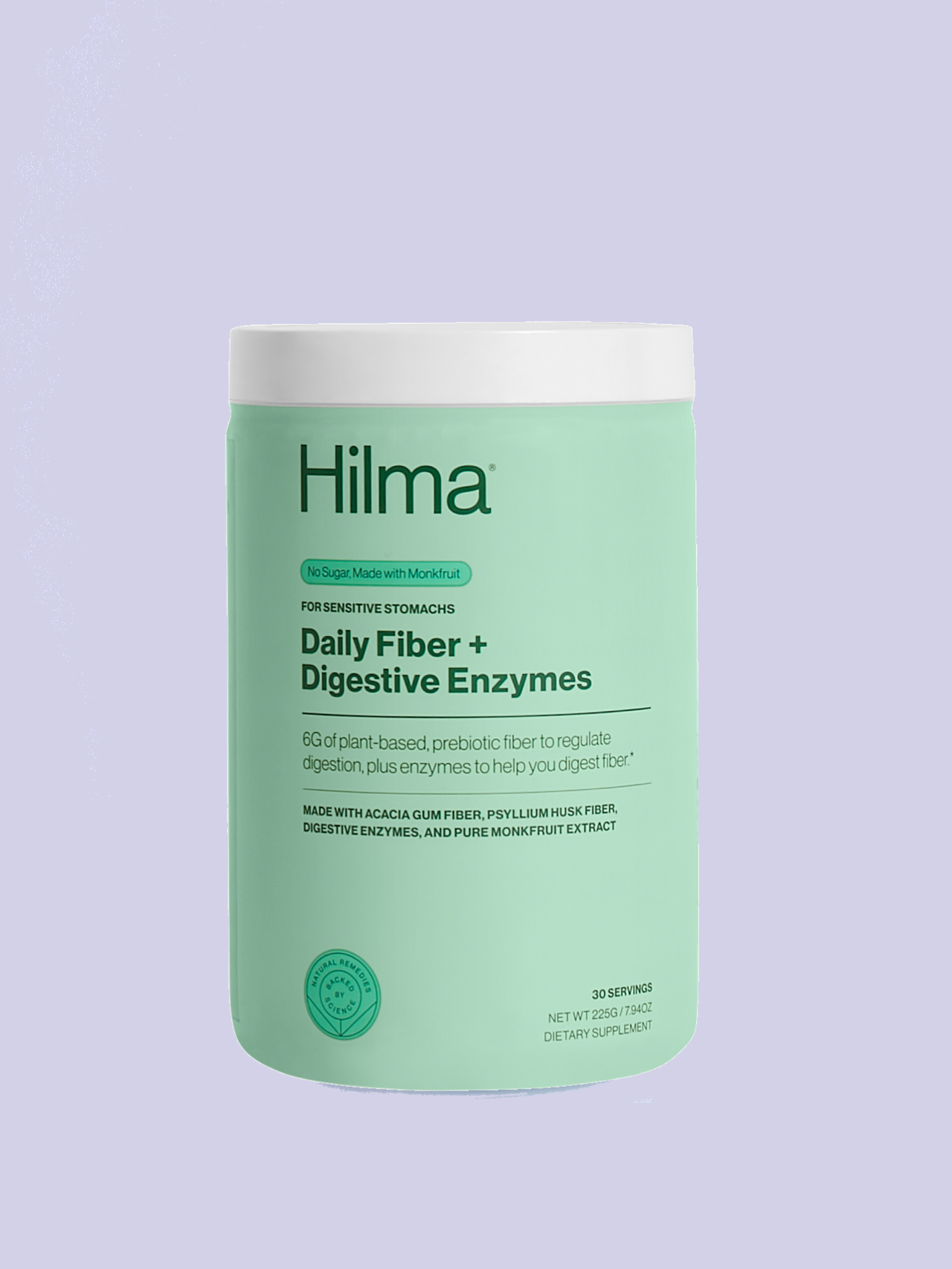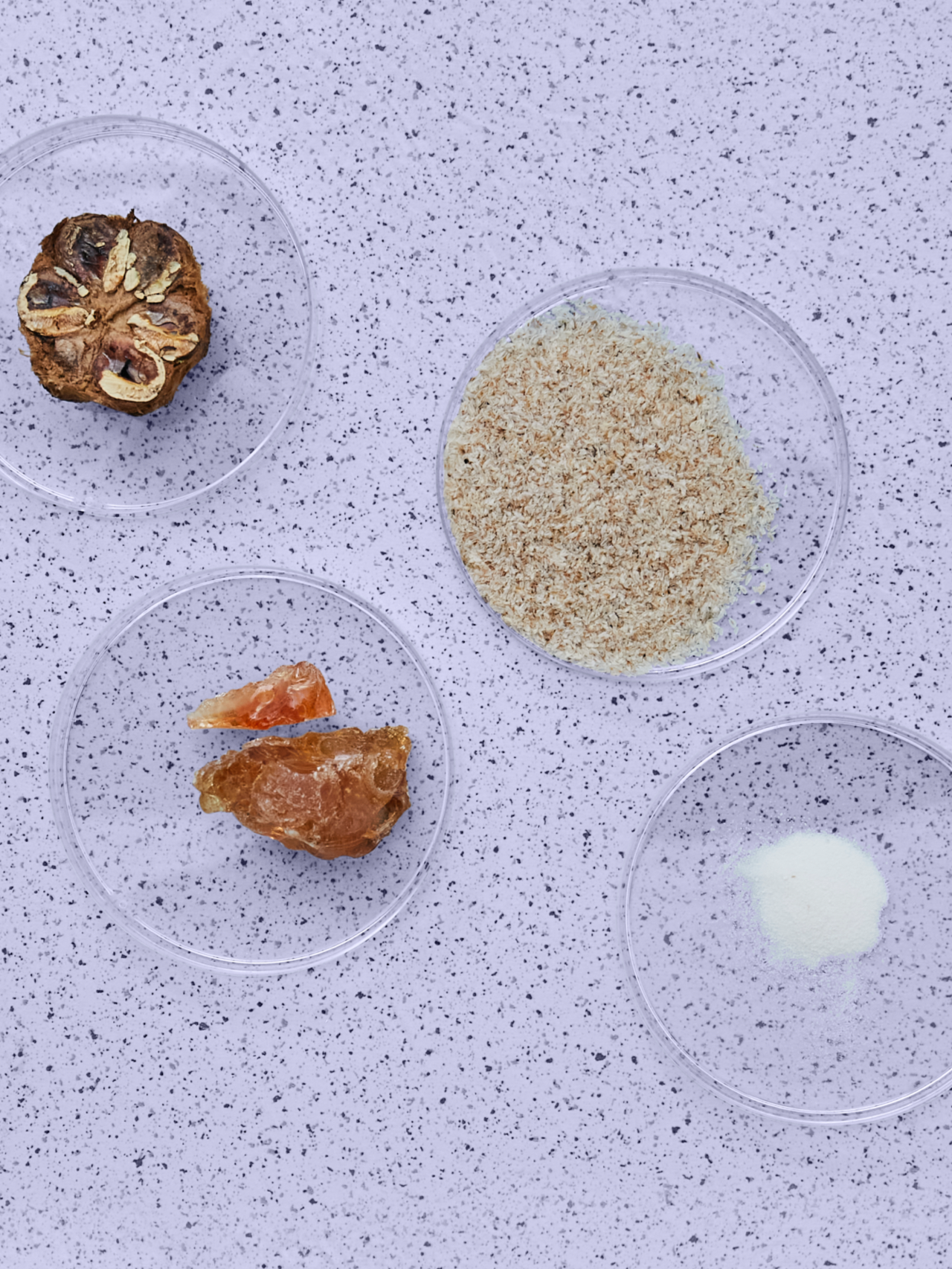
If you’ve scrolled through health TikTok lately, you might’ve noticed a bit of a turf war brewing. On one side, we have the carnivore die-hards pushing nose-to-tail organ meats as the cure to all modern ailments. On the other, the fiber fanatics who swear by 80-gram days of chia pudding, lentil bowls, and ten-pound salads.
Here’s the thing: both protein and fiber are having a well-deserved moment in the spotlight. They are foundational. They are therapeutic. And they are incredibly misunderstood when treated like opposing forces instead of complementary partners.
So in a culture that thrives on polarity—animal vs. plant, bulk vs. cut, keto vs. high-carb, and the ever-raging carnivore vs. vegan debate—it’s time we call a truce and get back to what your body actually needs: synergy. Especially if we’re talking about your gut.
Let’s break this down.
First up: What Actually Is Protein?
Protein is made up of amino acids—literally the building blocks of your body. Think muscles, enzymes, neurotransmitters, hormones, skin, hair, nails, immune cells. Every structure and function in your body depends on protein in some capacity.
There are 20 amino acids in total, and 9 of them are considered “essential,” meaning you must get them from food. Unlike fat and carbohydrates, your body doesn’t store protein for later use. It has to come in regularly to maintain, repair, and rebuild your tissues.
From a gut health perspective, protein does a lot more than just help you “build lean muscle” or hit your macro targets:
-
It supports the production of digestive enzymes, which break down the food you eat.
-
It’s essential for creating glutathione—your body’s master antioxidant and a key player in gut lining repair.
-
It supplies amino acids like glycine, proline, and glutamine that literally make up the gut barrier.
-
It helps modulate immune responses within the gut-associated lymphoid tissue (GALT).
-
It stabilizes blood sugar, which reduces cortisol spikes that can contribute to leaky gut and microbial imbalance.
Basically: no protein = no scaffolding for gut repair.
But—and this is a big but—protein alone doesn’t make a happy gut. Because as much as your body thrives on structure, it also needs fuel for the trillions of microbial workers running the show behind the scenes. And that’s where fiber comes in.
So Then, What’s Fiber?
Fiber is technically a type of carbohydrate—but unlike starches or sugars, your body can’t digest it. Instead, it travels through your small intestine largely intact, landing in the colon where it becomes microbial food.
Let me repeat that: fiber isn’t feeding you—it’s feeding your microbiome.
There are two main types of fiber:
-
Soluble fiber dissolves in water and forms a gel-like substance. It slows digestion, helps lower LDL cholesterol, and serves as a prebiotic for beneficial gut bacteria like Bifidobacteria and Akkermansia.
-
Insoluble fiber adds bulk to stool and helps move things along, promoting regularity and detoxification.
Both types of fiber have significant roles to play:
-
They stimulate the production of short-chain fatty acids (SCFAs) like butyrate, acetate, and propionate. These SCFAs strengthen the gut lining, lower inflammation, support metabolic health, and communicate directly with your brain and immune system.
-
They balance pH in the colon, making it less hospitable to pathogenic bacteria and more friendly for the beneficial ones.
-
They help regulate appetite and insulin sensitivity by modulating hunger hormones like ghrelin and peptide YY.
-
They support the detoxification of hormones, bile, and toxins by helping bind and excrete them through stool.
You can take all the probiotics in the world, but without fiber, you’re just reseeding an empty garden.
Why Gut Health Needs Both—Not Either/Or
Here’s where people go wrong: zooming in on one macronutrient and treating it like a miracle drug. High-protein diets can repair tissues, build muscle, and aid metabolism—but go too low-fiber and you risk microbial starvation, constipation, and toxin reabsorption.
On the flip side, ultra-high-fiber diets without enough protein (especially complete protein) can leave you under-recovered, inflamed, and bloated. It’s common to see people loading up on raw vegetables, seed crackers, and chickpea pasta—then wondering why they feel more inflamed than ever. The issue isn’t the fiber itself, but how it’s paired, prepared, and balanced.
The gut is both a mechanical system and a living ecosystem. It needs protein to maintain physical infrastructure—tight junctions, epithelial cells, immune defense. But it also needs fiber to feed the bacteria that maintain chemical balance, regulate inflammation, and produce key compounds like butyrate.
It’s not about fiber vs. protein—it’s about fermentation and fortification happening at the same time.
The Science of Their Synergy
Let’s get a little nerdy.
There’s a well-established connection between amino acids like glutamine and glycine and intestinal barrier integrity. Glutamine, in particular, is the primary fuel source for enterocytes (cells lining the small intestine). Supplementing with glutamine has been shown to reduce gut permeability and improve healing after GI injury.
At the same time, fiber-derived SCFAs like butyrate are also critical to that same barrier. Butyrate improves mucin production (your gut’s slimy protective coating), enhances tight junction integrity, and suppresses pro-inflammatory signaling pathways like NF-kB.
When you consume adequate protein and fiber together—say, salmon with roasted vegetables and quinoa, or eggs with sautéed spinach and avocado—you’re hitting the gut from both angles:
-
The amino acids fuel gut lining repair and enzyme production.
-
The fiber feeds microbes that ferment and create SCFAs.
-
The combined blood sugar stability reduces stress on the HPA axis.
-
And together, they create an internal environment that supports digestion, detoxification, and microbial balance.
This is especially crucial if you’ve dealt with chronic stress, gut infections, hormone imbalances, or restrictive dieting—all of which compromise the gut lining and microbiome diversity. In these cases, it’s not enough to eliminate “triggers”—you have to rebuild the terrain.
What Happens When We Leave One Behind?
Let’s paint two extremes:
-
The Zero-Carb, All-Animal Approach: You feel better at first. Your bloating disappears. Skin clears. Mental focus improves. Why? You’ve starved overgrown bacteria and yeasts of fermentable carbs. But over time, your microbial diversity shrinks. SCFA production drops. You may experience constipation, bile sluggishness, and difficulty breaking down fats and detoxing hormones. Long-term? Risk of dysbiosis and impaired gut barrier.
-
The All-Plant, Low-Protein Grind: You’re hitting your fiber goals with flax crackers, lentil bowls, and green smoothies. But you’re under-consuming leucine, methionine, and lysine—essential amino acids needed for repair and detox. Your stomach acid drops. You’re bloated, tired, and constantly craving sweets or starches. Your gut is full, but your cells are starving.
Neither scenario works long-term. Real healing—especially of the gut—requires nourishment from all sides.
How to Eat for Gut Synergy (Not Social Media Algorithms)
Let’s ground this in some real-world meals. Because this doesn’t need to be complicated. It’s not about hitting perfect macros. It’s about including both players on your plate:
-
Breakfast: Scrambled pasture-raised eggs with spinach + a slice of sourdough + chia pudding on the side/fruit
-
Lunch: Grass-fed beef or lentil stew with carrots, celery, onion, and white beans
-
Snack: Greek yogurt with ground flax + berries OR hummus with veggie sticks + a hard-boiled egg
-
Dinner: Wild salmon with roasted sweet potato + garlicky kale + quinoa or rice
Aim for:
-
20–30g of protein per meal (minimum)
-
30–40g of fiber daily, from varied sources (seeds, fruits, veggies, legumes)
-
Cooked vs. raw balance—especially if you’re struggling with bloating
-
Diverse colors, textures, and plant types to nourish microbial diversity
The ultimate combo? A fiber-rich prebiotic base + high-quality protein + healthy fat. Every meal, every time.
We’re living in a time when macros are politicized and health is filtered through dogma instead of data. But your body doesn’t care about food tribes. It cares about function.
Protein and fiber aren’t fads—they’re fundamentals. They support the gut differently, but powerfully. Together, they create a resilient internal environment that regulates digestion, immunity, hormones, and mood.
So no, you don’t have to choose between being the fiber or the protein guy.
You just have to stop fighting what your gut’s been trying to tell you all along: it needs both.




